A person’s ability to walk upright not only has obvious advantages, but also disadvantages. Increased pressure on the spine leads to the development of various diseases. Osteochondrosis is considered a common disease, affecting more than 60% of the population. This diagnosis is observed in people over the age of 35, but there are many cases of adolescent symptoms. One of the methods is surgery, but in the early stages, treatment with alternative methods is possible.
The cause of the disease
The defeat of the disc between the vertebrae, the spinal tissue in medicine is called osteochondrosis. Doctors can not name the only exact cause of the disease, and sometimes this is impossible, because the disease develops under the influence of a combination of factors. This includes:
- Hereditary predisposition to this disease.
- The presence of diseases of the endocrine system - metabolic disorders.
- Development of orthopedic diseases, for example, flat feet, postural curvature, diseases of the musculoskeletal system.
- Various injuries, spinal bruises.
- Lifestyle: lack of activity, unhealthy diet with dominance of fast food and unhealthy foods.
- Overweight.
- Bad habits - smoking, alcoholism.
- Stress, too much work.
- Pregnancy.

Methods for the treatment of osteochondrosis
Osteochondrosis is a disease that is accompanied by pain, discomfort, and with prolonged neglect can lead to complications. The disease undergoes treatment and for this various methods can be used, the choice of which depends on the localization of the disease, the degree of neglect, and the general health condition. There are several treatment options:
- Surgery.
- Physiotherapy.
- Methods of recovery.
- Health at home.
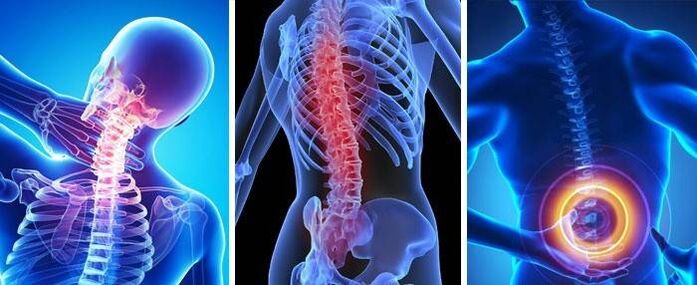
Before choosing a method of treatment, you should determine the type of disease, its localization and the presence of complications. There are such types, with their special features:
- Cervical osteochondrosis. Symptoms of the disease: pain in the shoulders, arms, neck; dizziness: tinnitus, colored spots in front of the eyes; headache, numbness of the upper limbs.
- Cartilage disease of the thoracic spine. The symptoms are dull or a shooting pain in the chest.
- Diseases that develop in the lumbosacral region. Signs include: pain in the hip joint, lower back, sacral area; dysfunction of the lower limbs.
- Common - osteochondrosis develops simultaneously in several parts of the spine, accompanied by severe pain.
Rehabilitation treatment
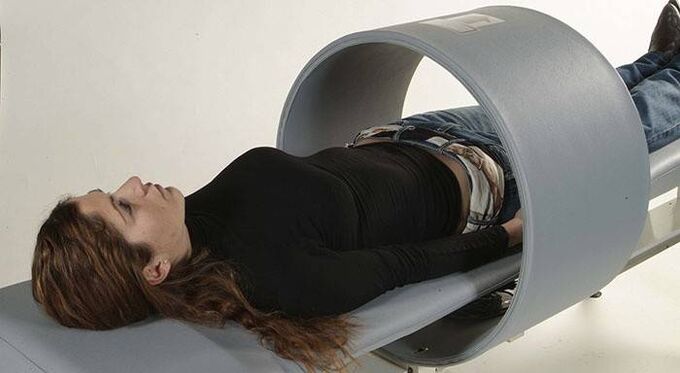
It is possible to restore health after osteochondrosis, the main thing is to follow all the recommendations of the doctor and undergo rehabilitation treatment. This option is used only for remission of the disease, when there is no severe pain in the back. It is not recommended to aggravate the situation. Osteochondrosis is treated by several methods:
- Physiotherapy.
- Sauna, underwater hydromassage, classes in the pool.
- Work with psychologists.
- Adherence to diet, nutritional correction.
- Laser treatment.
- Manual therapy.
- Use of healing mud.
- Magnetotherapy, electrophoresis.
- Sort.
Surgical intervention
Sometimes patients delay treatment and solving the problem of osteochondrosis without surgery is not possible. This is an unusual method and is used when other treatment options fail or when exacerbations are observed, such as an intervertebral hernia or sciatica. The main goal of treatment is to stabilize the structure of the spine, to reduce stress on the spinal cord. This method of treatment is used in cases of emergency, as there is a significant risk of spinal cord damage, which is fraught with irreversible consequences.
How and how to treat osteochondrosis at home
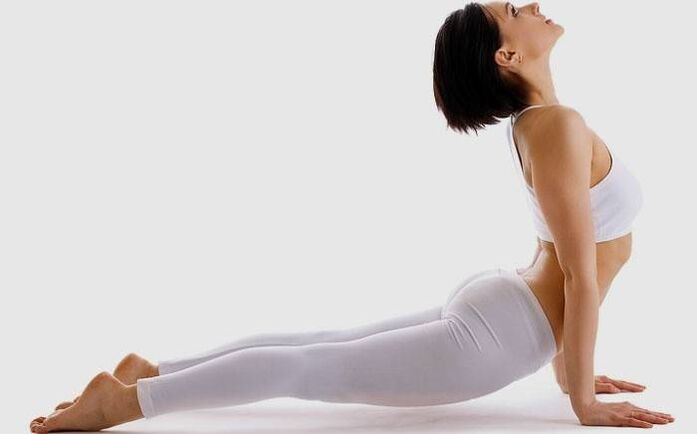
Treatment of osteochondrosis can be done not only in the hospital, but also at home, but by adhering to all the recommendations and prescriptions of the doctor clearly and unequivocally. And if there is a desire to try other methods, this should be done only after consultation with an expert. At home, it is possible to use the following methods to treat osteochondrosis: exercise, yoga; homeopathy, medicines; dietary compliance; traditional medicine.
Drug treatment
Comprehensive treatment of osteochondrosis includes rehabilitation procedures, diet and medications. Dosage, a specific drug choice, should be prescribed and changed exclusively by the attending physician, with a focus on test results and general condition. All drugs used are divided into two types: to relieve pain of various stages, to prevent disease.
The first type includes:
- For mild pain, nonsteroidal anti-inflammatory drugs (NSAIDs) are used.
- If the patient is in pain for two or more weeks, analgesics should be added to the above medication.
- If the pain persists for more than three months, antidepressants should be added to analgesics and NSAIDs, which will help regulate the patient’s psychological state.
Drugs aimed at preventing osteochondrosis by regenerating cartilage and restoring metabolic processes in the human body.
It is important to know how to treat cervical osteochondrosis with medication, as this is the most common type of disease. As a medicine, it should be used:
- Anti-inflammatory drugs.
- Warming ointment.
- Preparations for cartilage tissue recovery.
Therapeutic diet
Proper nutrition and adherence to a diet for osteochondrosis is the key to quick and accurate removal of the disease or prevention. Basic nutritional principles:
- The diet should be as varied as possible.
- The menu of patients with osteochondrosis must be low in calories.
- Dishes containing mucopolysaccharides (e. g. , fish jelly, jelly, meat jelly) will be useful.
- Adhere to drinking rules - the body must receive the required amount of fluid.
- The menu of people suffering from pain in the spine must include foods: eggs, nuts, fresh fruits and vegetables, lean meats, fish.
- Limit the use of smoked meats, pickles, sour, spicy foods.
- Useful rice diet: put 30 grams of rice in 6 half -liter jars and pour water over it. In the morning, rinse the contents of the container first, boil and eat for breakfast (salt or show nothing). Pour the rice into an empty jar and add water, place at the end of the row, and replace the water in another container. It costs about a month and a half to eat like this. This method of treating osteochondrosis will help remove toxins and salts.
Physiotherapy training
Many are looking for options on how to get rid of osteochondrosis with minimal medication use and without surgery. A simple but effective method of treatment is physiotherapy training on a simulator or at home. Doing moderate exercise, depending on regular exercise, works well for disease prevention and elimination of symptoms (pain, inflammation, concomitant diseases that have developed against the background of osteochondrosis).
Exercise therapy for cervical osteochondrosis:
- Lie on your stomach, legs and back straight. Lift your chest and head, lean on your stomach, repeat the exercise for 3 minutes, 5-6 approaches.
- Lying on your back, legs bent at the knee joints. Turn right, then left. We did 8 approaches a day, devoting 5 minutes to lessons.
Exercise therapy for lumbar osteochondrosis:
- Stand, feet shoulder -width apart. Within minutes, a circular movement is performed with the pelvis. For complications, it is possible to make a "figure eight". Lessons last for 3-5 minutes, but need to be repeated several times a day.
- Standing on all fours, bend your lower back as much as possible. Repeat at least 5 times a day for 2 minutes.
Exercises for chest osteochondrosis:
- Lying on the floor, lift your upper body, lean on your hands, bend your back, maintain the position for 10 seconds.
Folk remedies
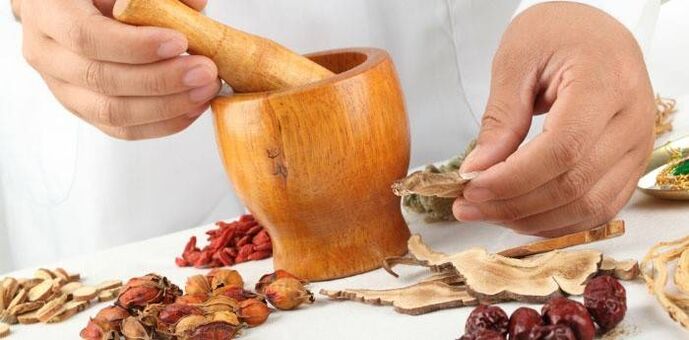
For the treatment of osteochondrosis, traditional medicine is used, which includes: compresses, tinctures, rubs, special exercises to relieve pain. Alternative medicine can be used only in combination with classical medical treatment methods, otherwise it will not bring the desired result, and in the worst case, it will lead to complications. Consider how to treat osteochondrosis with folk remedies:
- In a one-to-one ratio, combine peeled potatoes, grated and honey. In the form of a compress, place, focus on the pain and its surroundings, hold until the burning sensation.
- Apply a heated wax to the place where osteochondrosis develops, annoying pain, cover with a warm scarf.
- Mix vodka, aloe and honey in a ratio of 3: 1: 2, leave for several hours. From the resulting mixture, make medical compresses, preferably at night, they relieve pain well.
- Nettle oil helps in the treatment of osteochondrosis, relieves pain. For its preparation, 2 tablespoons of nettle seeds are poured with vegetable oil (0, 5 cups) and put for 2 weeks, filtered and poured into a dark glass container. When pain is felt, oil is applied to the skin.
It is always easier to prevent the progression of a disease than to cure it. Preventive measures include: proper and balanced nutrition; active lifestyle; regular exercise for osteochondrosis. The latter method does not require much time, but is just as effective as treatment with medications, procedures, and possibly classes at home. The main thing is to choose the right complex, calculated for a particular type of disease.
Which doctor should you contact to diagnose this disease
While identifying the main symptoms of the disease, you should not delay a visit to a medical institution and begin treatment. It is important to know which doctor is treating osteochondrosis, how to contact him and whether additional tests and examinations are needed before the visit. You should visit the office of a local therapist, who will write a referral for the necessary tests and send it to a neurologist for consultation. You can turn to a narrow specialist - a vertebrologist who specializes in osteochondrosis.
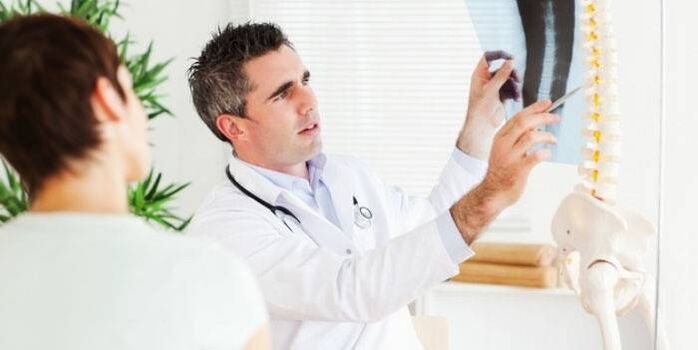
Osteochondrosis, a disease that affects every second person due to improper lifestyle, low activity, and other diseases. You need to monitor your health and get involved in disease prevention. By eating right, doing primitive physical exercise every day, you will not feel the symptoms of osteochondrosis on yourself.













































